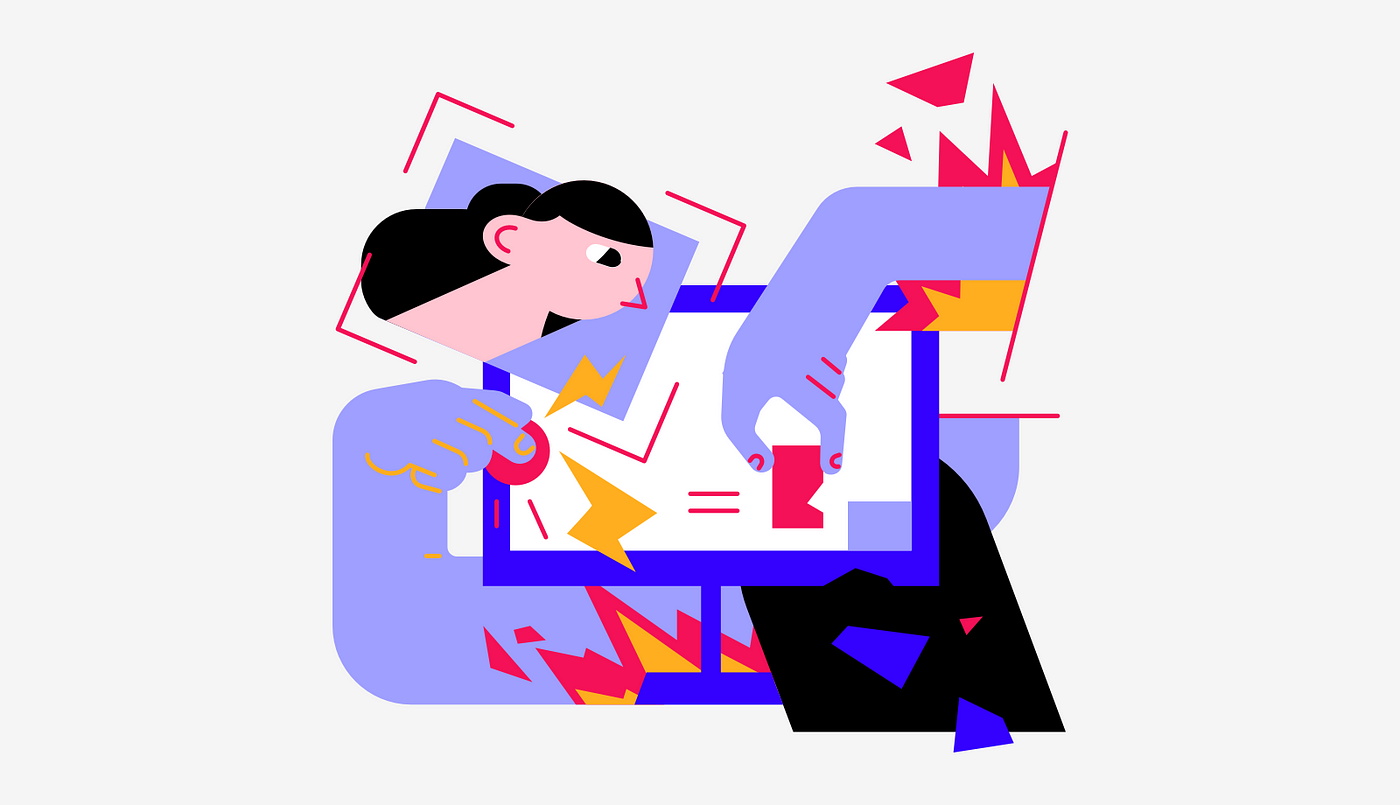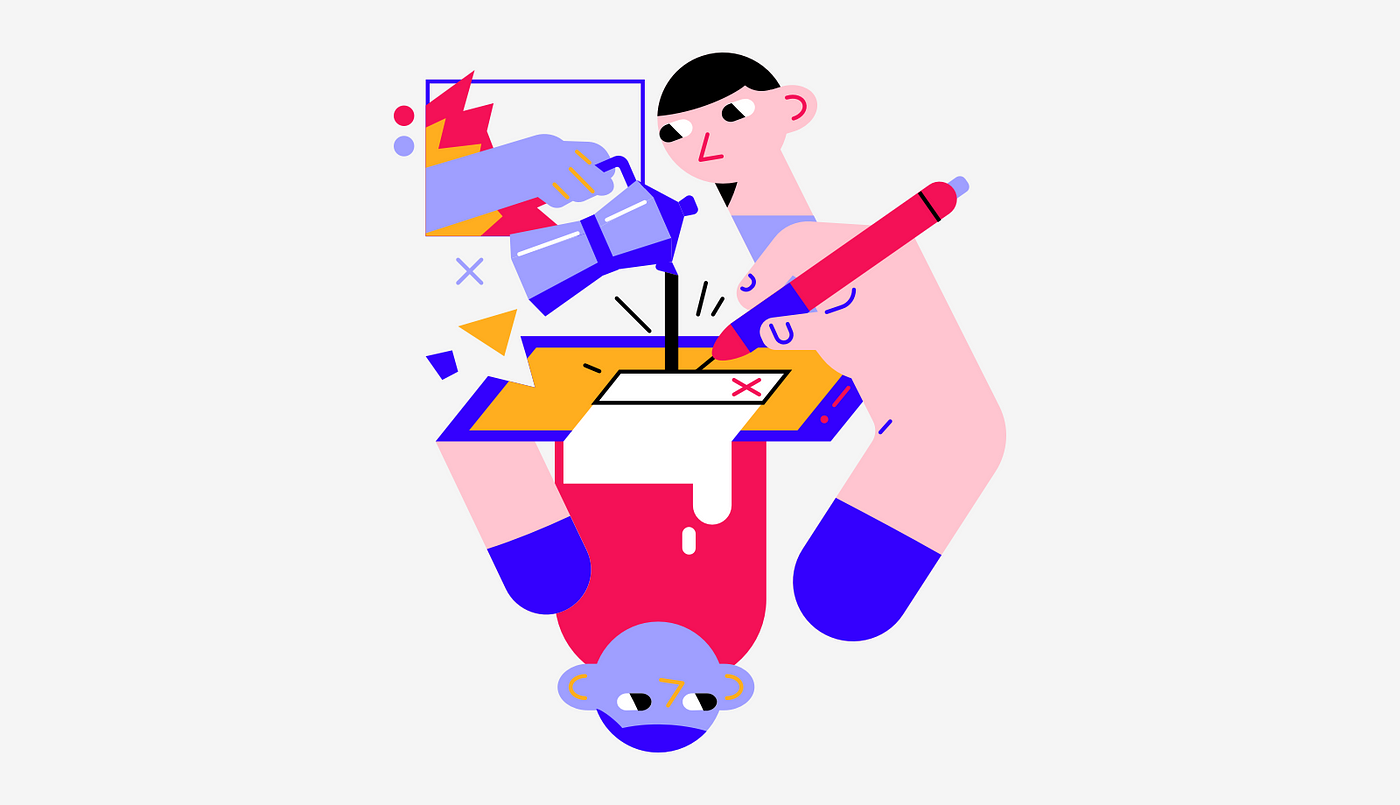

I could be a Senior Designer earlier
source link: https://blog.prototypr.io/i-could-be-a-senior-designer-earlier-102f8bd445ee
Go to the source link to view the article. You can view the picture content, updated content and better typesetting reading experience. If the link is broken, please click the button below to view the snapshot at that time.

DESIGN
I could be a Senior Designer earlier
if I learned these six things in Design school

Going to a design university is one of the best decisions I have ever made in my life. I have met inspirational instructors, great friends, good memories, and I have learned various things, which lays a solid foundation for my future work.
After graduating from college in Graphic Design, I chose a different path from what I had learned to become a UX/UI Designer.
I tried to manage in a new field with new domain knowledge and tried to self-learn new abilities. It has been a while, and I am about to set foot into my 10th year of this journey with my current work as a Product Design Coach at GEEK Up.
Having good results in school, I believed that my work would be just as easy as snapping my fingers. But then, I realized that what we have learned in school could only give us a head start. To be good at design work, we have to learn so much more.
Recently, I had a chance to recall my student time while attending as a member of the graduation board at the University of Architecture. My intended approach was to create trust, encouraging efforts, and sharing more information about what was waiting for the students who were about to embark on a career journey.
For that, I think knowing these following six pieces of advice when we are still at school, when we are full of dreams and ambitions, would be better:

1. Ideas do not have to flash “WOW” but need to be realistic.
When I was in school, brainstorming ideas for my projects made me feel pressured. I have always had in mind that I need to discover exceptional ideas for my project due to the characteristics of my creative major. During a 3-month specialized project, we would encounter:
- For the first month, circling for an extremely WOW idea, then we found out one that is best in one’s heart.
- In the following month, struggling because we were not skilled enough to perform our project perfectly.
- Within the last month, switching to another idea that is easier to carry out or submitting the product does not meet our expectations.
At that time, I completed the project with the thought of: “If only I knew how to use Photoshop better, if only I could draw a better Vector, etc.”; all these regretful thoughts prolonged my whole educational process. Sometimes it made me lose my confidence and face depression.
After working for a while, it turns out that those concerns should exist, but one must not let them turn into fixations since people do not need ground-breaking ideas if they cannot complete their ideas.
The most logical definition of the creative process is:
“Creativity is the act of turning new and imaginative ideas into reality. Creativity involves two processes: thinking, then producing.”
- creativityatwork.com
A realistic idea needs to satisfy three conditions:
- It is a solution to an existing problem.
- It is a solution that fits the project's constraints.
- These limitations include time, expenses, and implementation capacity of the project participants.
If I had understood earlier, perhaps I would not have been fixated with the above concerns and found ways to inspire ideas.

2. Design is objectivity.
It is about listening and gathering information from different angles.
I was a stubborn student, literally and figuratively. Every time I reviewed my work with an instructor, I usually do not agree with their feedback or corrections. I even make two different versions: one version according to the instructor’s opinion to get approval, and one version according to my opinion and submitted at the end.
With the mindset that creativity was a field that was more about the self-emotional ego, I wanted to express myself through my work rather than learn from others. Unknowingly, I selected the information that I wanted to hear, which supported my idea and ignored others.
It turned out that the design was not like that.
Design is the process of creating a solution for the user who use product.
Unlike artists, designers need to put themselves in an objective perspective, limit personal prejudice and make decisions based on factual information. To do this, designers must have the skills to collect and analyze data for the project goal.
Instructors are experienced individuals; the same goes for people in senior positions in a company. They give feedback and provide us with other perspectives for the design solution.
Think of it as information for reference, do not fully follow or ignore it completely. Objectivity is crucial for good designs.

3. There are no scary clients, only designers who are scared of the client.
The forerunners, online media, and industry insiders often spread “rumors” about clients who are hard to satisfy, such as how Mr. A, Ms. B’s aesthetic has problems, and how they deliberate about the brief like a restaurant menu. All of those rumors create a common misunderstanding about “scary clients.”
It would be a “double standard” if we keep demanding that our clients are pleased and listen to our expertise.
To change and convince our clients about the design, we first need to adjust the way we look at the clients.
Let’s start by thinking our clients are our partners — they have the budget, we have the expertise. Collaboration is essential to accomplish the common goal of creating suitable design solutions for the project. Both sides are equal, respectful, and willing to listen to each other instead of winning the contest of who is right.

4. Designers can do more than just make the designs look better
When I was still a student, I worked hard to pursue the aesthetic of my design. The more I fixed it, the more I got stuck because it seemed like, after improvement and improvement, the first version was the best. It turned out I was chasing an excessively vague criterion of “beauty.”
Beauty is not the criterion to evaluate a good design. Your ability can do better than that, ask questions for yourself and solve them logically, put yourself in the user’s shoes, understand how businesses make profits, and improve soft skills. You would recognize that our task is not about making things look nicer but to make things more meaningful.

5. To make your design persuasive. It will not be like protecting your thesis
When sitting on the board, I understood and was ready to tolerate a thesis lacking in the research process or an unsuitable solution for a problem. Sometimes, the problem and the solution were not even relevant to each other. I considered your efforts, and I believe your instructor had their ideas, so you needed more skills than just designing.
I did not know that design thinking was problem-solving while I was in university. Maybe I was not focused enough to understand this from my instructor. However, if I had learned this sooner, my school projects would have more of the practicality factor and be more beneficial to my work in the future.
Communication and presentation skills are essential skills that we must learn and practice ASAP since they will greatly benefit us.

6. If you don’t believe in your design, no one will.
Not believing in your design is a sign of a lack of deep research — the inability to spend the time and dedication for what you choose to pursue.
Not believing in your design also means you don’t trust your abilities. These are negative feelings and can make you freeze when someone challenges your design.
I had experienced this through my lack of investment, superficial projects, and faltering when the instructor asked about my design in the past.
“Confidence in creativity is not given; it is earned.”
Whatever you do, start with confidence — not arrogance. Be confident enough for clients to come and ask for your advice and professional knowledge. Be confident enough to keep your passion — keep flying on the journey of improving yourself.
I hope these six pieces of advice will be helpful to you.
Recommend
About Joyk
Aggregate valuable and interesting links.
Joyk means Joy of geeK